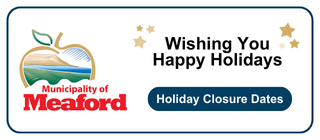Letter to the Editor
Editor,
This week, our kids returned to school. I have two sons successfully launched into careers, and one son embarking on third-year university. My daughter is heading back to high school after a busy summer. I think a lot about their futures: where they will live, what they’ll be doing in five or ten years, whether they’ll have work they love, and whether that work will support them. I look around me in Grey-Bruce and I wonder if there’s any prospect they will live and work here.
As a candidate for election, I’ve been speaking with people at doorsteps about what’s on their mind. And a lot of people are thinking about the same things that I am. They’re thinking about their children and grandchildren. About jobs. About what kind of future is in store.
Almost no one was surprised last week to discover that Canada is back in another recession. They have experienced a decade of low growth, scarce jobs, stagnant wages, and – often – a struggle to make ends meet. If there is an “invisible hand of the economy”, then the boarded-up stores on many of our main streets say that the “invisible hand” has wrapped itself around our throats.
The economic priorities of the Harper government have not been very kind to communities like Grey-Bruce. I’m not just talking here about this government’s big bet on oilsands development – although that bet was clearly short-sighted. A robust and sustainable economy needs balance… and investment in small- and mid-sized businesses like the ones that support our community.
With the focus on the oilsands, the Canadian loonie started to behave like a petro-currency: soaring against the U.S. dollar. That, in turn, created extra strain on manufacturing – especially in regions like southwestern Ontario. Canada lost 400,000 manufacturing jobs. In our region, both PPG and Interforest were shuttered: to name just two. And when you shut down big factories like PPG and Interforest, you set off a chain reaction. Pushing oil exports at the expense of manufacturing and services left our economy vulnerable. And as we learned last week, Canada is now the only G7 nation in recession.
These big bets on big industry have become commonplace. It’s “trickle-down economics”. The whole thing rests on the theory that lowering taxes on wealthy individuals and big corporations improves the economy by putting more money in circulation. It was promoted by both Reagan and Bush in the U.S. and it’s the essence of Harper’s economic policy.
Here’s the problem: the theory is wrong. The International Monetary Fund (IMF) recently published a report that studied data from 149 countries over a 30-year period. The IMF report finds the same thing you can see with your own eyes. Government policy directed by “trickle-down” theory leads to the concentration of wealth in the hands of a few, the hollowing out of the middle class, and the slowing of the economy. It also puts government into deeper debt. This happened to America under Reagan and Bush. It has happened to Canada under Stephen Harper. And the effects are as just as evident in Bruce-Grey-Owen Sound as they are elsewhere.
So where do we go from here? The Liberals’ “fairness” tax plan – supporting low- and middle-income Canadians – will help to arrest the effects of a decade of bad economic theory. It will start to loosen the grip of the “invisible hand” from some throats. It’s like deciding to stop dousing flames with gasoline – it’s a good start.
But to be realistic, it’s only that. There’s something more important that needs to happen – and that is to build an engine of economic prosperity that depends neither on trickle-down economics, nor on the export of commodities, nor on the attraction of large-scale industrial manufacturing firms to our communities. The Liberal commitment to major investment in public infrastructure should help provide the foundation for economic stability, and deal with the crumbling infrastructure that sits as a debt we are leaving our children.
And then we need to build an economic future for our community. Our country. Our kids.
What could that look like? Our region needs more ideas on this question, and I’d like to hear yours. From my standpoint, as I scan around the world’s economic success stories for communities like ours, I see some patterns:
1.Collaborations of multiple levels of government, educational institutions, investors, and entrepreneurs, in long-term strategic relationships. Clearly, working together… works.
2.Picking a “strategic focus” so that a region more quickly achieves a critical mass in a particular specialty such as IT, green tech, medical science, or biotech.
3.A focus on talent and training – including specialized education, but also apprenticeship and/or mentorship.
4.A long-term perspective – including ambitious investments in basic public research aligned with the strategy.
5.Activist investment by government in enabling infrastructure to support the strategy – for instance in the form of internet bandwidth, business incubators, and financing.
Before we can move forward into this kind of future for ourselves and our children, we need to set aside the failed assumptions of trickle-down economics. We need to stop counting on the invisible hand, and get our own hands to work on the project of building a more sustainable economy here in Bruce-Grey-Owen Sound. It’s doable. And October 19th would be a good day to lend your hand to that work.
Kimberley Love, BGOS Federal Liberal Candidate











